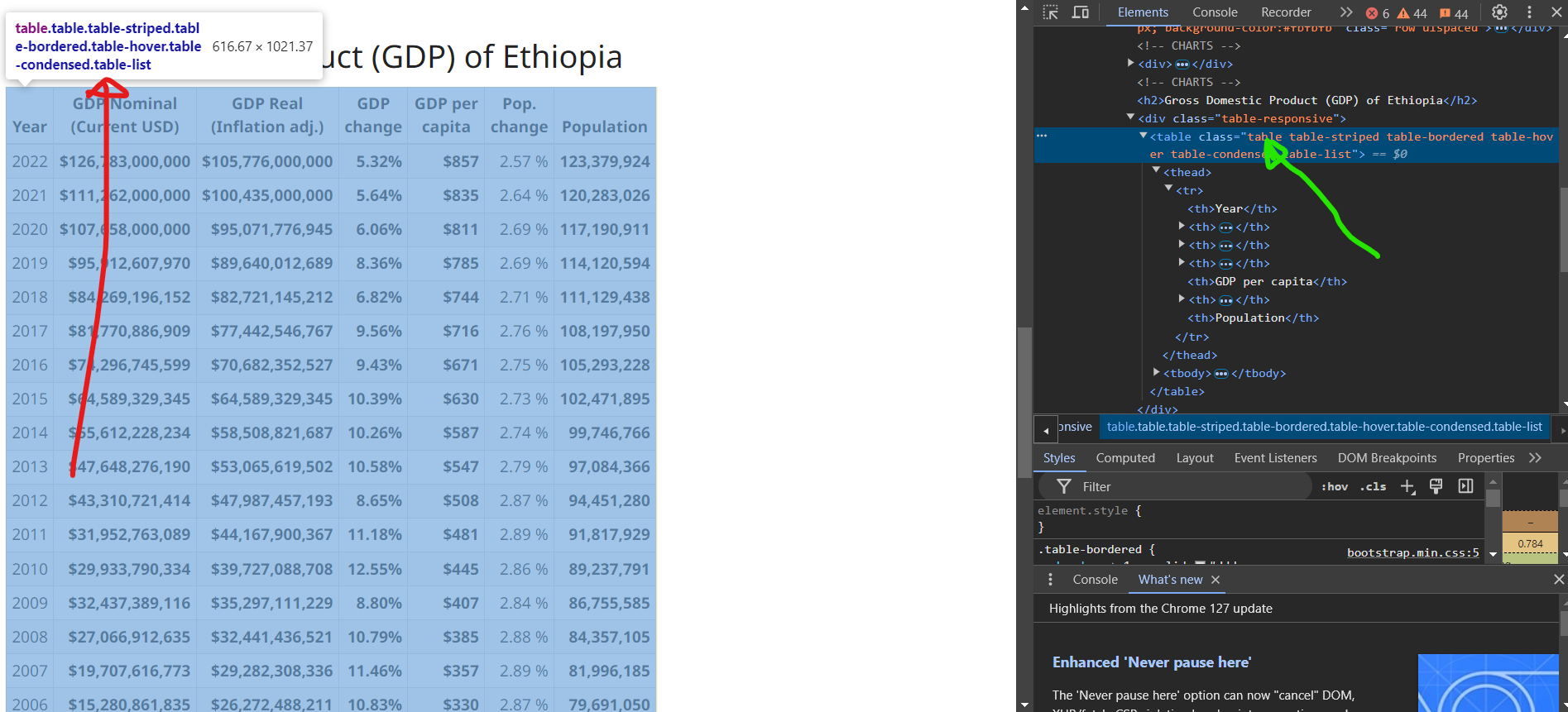[[1]]
# A tibble: 30 × 7
Year `GDP Nominal (Current USD)` `GDP Real (Inflation adj.)` `GDP change`
<int> <chr> <chr> <chr>
1 2022 $126,783,000,000 $105,776,000,000 5.32%
2 2021 $111,262,000,000 $100,435,000,000 5.64%
3 2020 $107,658,000,000 $95,071,776,945 6.06%
4 2019 $95,912,607,970 $89,640,012,689 8.36%
5 2018 $84,269,196,152 $82,721,145,212 6.82%
6 2017 $81,770,886,909 $77,442,546,767 9.56%
7 2016 $74,296,745,599 $70,682,352,527 9.43%
8 2015 $64,589,329,345 $64,589,329,345 10.39%
9 2014 $55,612,228,234 $58,508,821,687 10.26%
10 2013 $47,648,276,190 $53,065,619,502 10.58%
# ℹ 20 more rows
# ℹ 3 more variables: `GDP per capita` <chr>, `Pop. change` <chr>,
# Population <chr>


